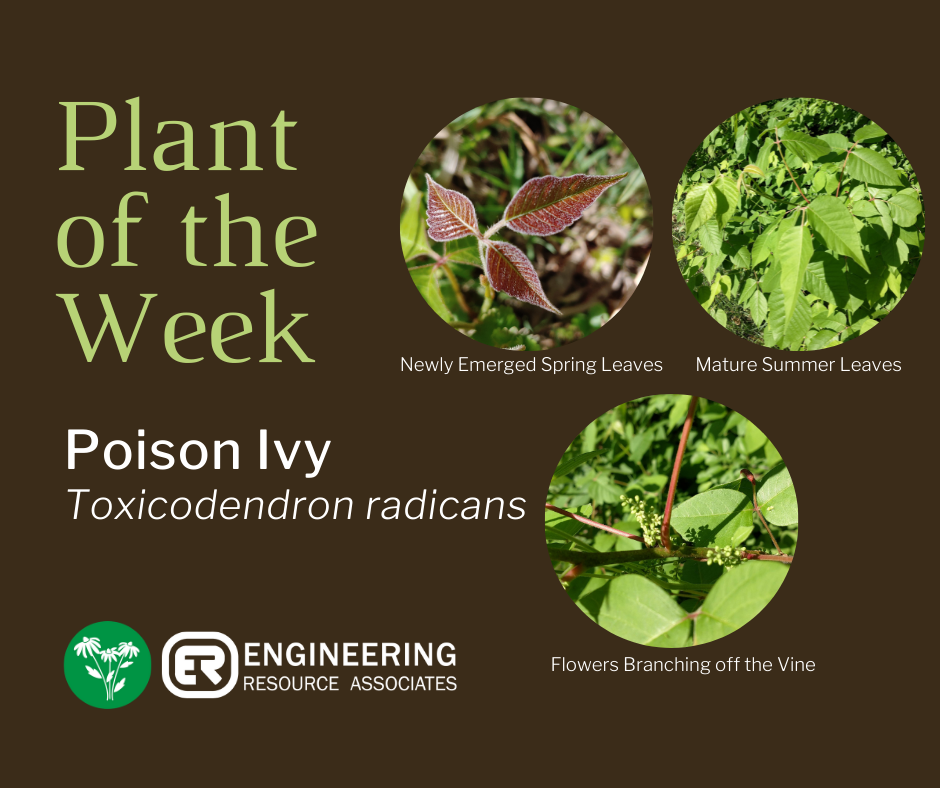By popular demand, this week’s plant of the week is Poison Ivy, also known as Toxicodendron radicans. As we progress into the growing season it is important to know which plants are friend and which are…less friendly. Because all native plants have their purpose, none are foes.
Poison Ivy is an annual woody vine in the cashew family Anacardiacae (related to cashews, pistachios, and mangos) found commonly throughout Illinois and most of the Midwest, where it establishes in moist forests, savannas, and forest edge habitats, often in the areas surrounding wetlands and streams. The plant is a woody vine that grows up to 60’ vertically up trees, posts, or buildings when supported, or in a low loose mounding shrub when grown in the open. Emerging in spring, the young leaflets appear in groups of 3 and can range from yellow to bright green to red as they emerge early in the season. Mature leaves adopt a waxy finish and continue to be a range of greens and reds, and are even highly variable in final leaf shape, with some having smooth or lobed margins. As such, this plant can be difficult to identify without the proper knowledge and terminology. Other species in this genus include Toxicodendron diversilobum (Poison Oak), another vine native to the western US, and Toxicodendron vernix (Poison Sumac), a shrub that is native to Illinois but occurs only in higher quality wetland habitats and is much less common than its relatives.
The irritating oil Urushiol is found throughout the plant, including the woody vine, and is released when the foliage is bruised or the stem damaged. Not all people are susceptible to a reaction; however, as people age, the oil can cause reactions in people who were previously immune. Reactions can range from simple contact dermatitis in the form of a red itching rash, more severe cases can result in blisters and hospitalization. If poison ivy is burned in a brush pile, the aerosolized oils can result in anaphylaxis and death if not treated. Dried urushiol can remain potent on cut vines, pet hair, and even contaminated tools for an extended period so it is best to wash everything with soap targeted toward oil/grease if you suspect contamination or have been working with the plant on your property (Dawn kitchen soap or any other grease-centric soap works well for this purpose). If you think you have been exposed to urushiol, it is best to wash the area as soon as possible and monitor the area to watch for worsening symptoms. Exposure is best prevented by wearing long pants, closed-toe shoes or boots, and long sleeve shirts to prevent direct skin contact.
Fortunately, nature works to balance itself out and the best-known remedy for urushiol-based dermatitis is the Illinois native Jewelweed (Impatiens capensis), which is the primary active ingredient in many anti-itch ointments and can be found in the same moist woods where Poison Ivy is prevalent. More severe exposure resulting in hospitalization requires treatment by prescription strength steroid creams.


 RSS Feed
RSS Feed